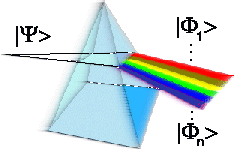E. Infeld, P. Ziń, J. Gocałek, and M. Trippenbach
We treat the behavior of Bose-Einstein condensates in double square well potentials of both equal and different depths. For even depth, symmetry preserving solutions to the relevant nonlinear Schrödinger equation are known, just as in the linear limit. When the nonlinearity is strong enough, symmetry breaking solutions also exist, side by side with the symmetric one. Interestingly, solutions almost entirely localized in one of the wells are known as an extreme case. Here we outline a method for obtaining all these solutions for repulsive interactions. The bifurcation point at which, for critical nonlinearity, the asymmetric solutions branch off from the symmetry preserving ones is found analytically. We also find this bifurcation point and treat the solutions generally via a Josephson junction model. When the confining potential is in the form of two wells of different depth, interesting phenomena appear. This is true of both the occurrence of the bifurcation point for the static solutions and also of the dynamics of phase and amplitude varying solutions. Again a generalization of the Josephson model proves useful. The stability of solutions is treated briefly.
Phys. Rev. E 74, 026610 (2006)
Apr 5, 2006
Kinetic lattice gas model of collective diffusion in a one-dimensional system with long-range repulsive interactions
Magdalena A. Zauska-Kotur, Zbigniew W. Gortel
Collective diffusion is investigated within the kinetic lattice gas model for systems of particles in one dimension with repulsive long-range interactions which are known to result in a staircaselike phase diagram with an infinite sequence of incompressible crystalline phases separated one from another by unstable compressible liquidlike phases. Using a recently proposed [Gortel and Zauska-Kotur, Phys. Rev. B 70, 125431 (2004)] variational method, an analytic expression for the particle density dependence of the diffusion coefficient is derived in which commonly postulated static and kinetic factors are unambiguously identified. It is shown that while the static factor exhibits singular coverage dependence due to a sharp drop of compressibility when the system enters a crystalline phase, the kinetic factor may substantially modify this behavior. Depending on details of the activated state interactions controlling the migration kinetics the diffusion coefficient may also be singular or, at another extreme, it may be a continuously smooth function of density. In view of these observations recent results on efficient low temperature self-reorganization through devil's staircase phases in the dense Pb/Si(111)-× are discussed.
Phys. Rev. B vol. 74, 045405 - 1-16 (2006) [1/2]
Collective diffusion is investigated within the kinetic lattice gas model for systems of particles in one dimension with repulsive long-range interactions which are known to result in a staircaselike phase diagram with an infinite sequence of incompressible crystalline phases separated one from another by unstable compressible liquidlike phases. Using a recently proposed [Gortel and Zauska-Kotur, Phys. Rev. B 70, 125431 (2004)] variational method, an analytic expression for the particle density dependence of the diffusion coefficient is derived in which commonly postulated static and kinetic factors are unambiguously identified. It is shown that while the static factor exhibits singular coverage dependence due to a sharp drop of compressibility when the system enters a crystalline phase, the kinetic factor may substantially modify this behavior. Depending on details of the activated state interactions controlling the migration kinetics the diffusion coefficient may also be singular or, at another extreme, it may be a continuously smooth function of density. In view of these observations recent results on efficient low temperature self-reorganization through devil's staircase phases in the dense Pb/Si(111)-× are discussed.
Phys. Rev. B vol. 74, 045405 - 1-16 (2006) [1/2]
Subscribe to:
Comments (Atom)
